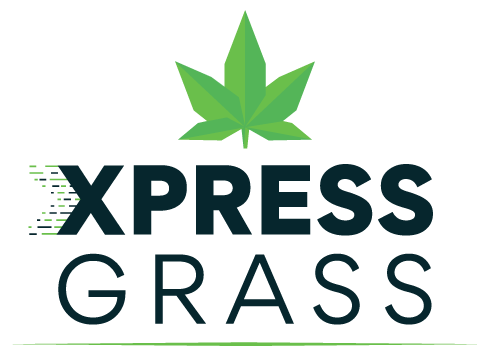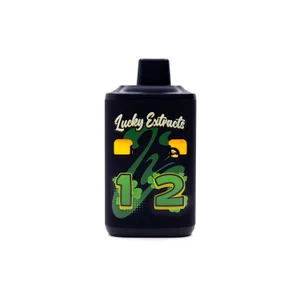On many drug addiction programs, “abstinence” is the keyword. The reasoning? Perhaps something akin to “Using cannabis keeps you in a drug-using environment, and potentially makes you susceptible to using other drugs (gateway theory). Also, cannabis is a drug, and you cannot use drugs to get off other drugs.”
Yet, we already use opioids to wean people off other opioids. In fact, many standard treatments for getting people off other drugs or to manage their side-effects involve the use of plenty of other drugs. Whether it’s alcohol, opioids, benzodiazepines, stimulants and many other drugs besides, prescription or not, treating them often involves using other drugs. So, the question simply becomes, “Why not cannabis?”
We have argued before that cannabis could be seen as an “exit drug” rather than an “entry drug”. Cannabis is already far less addictive and damaging than many of the drugs we prescribe quite legally, opioids included, and there are several good reasons why we can utilize cannabinoids to help treat people in pain and possibly already on the road to addiction. Moreover, it’s not just prescription painkillers that cannabis could prove an alternative to, but a whole host of drugs other drugs as well, licit or illicit …
-
The endocannabinoid system interacts with the opioid receptors – they “talk” to one another. The ECS also plays a role in reward and addiction, so targeting the ECS to treat addiction is entirely rational. Due to this factor, cannabis could be said to be an effective “replacement” for opioids, and lessen the need for them. Treating opioid addiction already often uses other opioids. Cannabinoids represent a great alternative. Understanding the ECS could also help us treat addiction to alcohol, cocaine, stimulants such as Ritalin, and even nicotine.
-
Beta-caryophyllene – the “peppery” smell that’s usually associated with many strains of cannabis (generally sativa-leaning ones, but not always) is caused by the same compound that gives black pepper, rosemary and hops their distinct “spice” – that is, caryophyllene, often known as beta-caryophyllene (alpha-humulene is the name now given to alpha-caryophyllene, and this terpene is often found in combination with beta-caryophyllene). Beta-caryophyllene is a CB2 receptor agonist, so can therefore be seen as a cannabinoid as opposed to a terpenoid! In mice, using beta-caryophyllene as a CB2 receptor agonist reduced voluntary alcohol intake. Activating this receptor may also help beat the inflammation and liver injury associated with alcoholism. The analgesic properties of beta-caryophyllene may also make it a potential analgesic, reducing the need for opioids.
-
Dopamine – THC can help release dopamine and increasing dopamine receptor activity, with long-term use potentially blunting the dopamine system. Many drugs work similarly, whether opioid, alcohol or stimulant. However, where long-term use of such substances can cause permanent changes to the body’s dopamine receptors, cannabinoids seem to regulate dopamine differently. As most if not all drugs of abuse increase dopamine production, at least in the short-term, cannabis can do similarly, but far more safely than other substances. This makes it an effective “crutch”, and can help a person prevent seeking more harmful substances.
-
The other terpenes – limonene, humulene, myrcene, pinene, carene … The list of terpenes found in cannabis is huge. Depending upon which terpenoid profile you go for, they can potentially help “simulate” the effect of other drugs to some extent. For example, a patient with ADD/ADHD may use a cannabis strain or product high in terpenes such as limonene and pinene, combined with some THC, in place of Adderall or Ritalin to improve focus. Myrcene, which is also found in hops, is often found in many types of cannabis, especially indicas.
-
Withdrawal symptoms – sadly, opioids and many other drugs, pharmaceutical or otherwise, cause withdrawal symptoms if use is suddenly stopped. Nausea, vomiting, loss of appetite, restless legs, drug cravings, insomnia, headaches, anxiety, depression, tremors, muscle tension and so on. Alcohol and tranquilizers produce the most severe and dangerous symptoms of physical withdrawal, including delirium tremens (DT), grand mal seizures, strokes, hallucinations and heart attacks. Cannabis can help with all of these problems to some extent. We’ve spoken to Joe Schrank of High Sobriety about these issues before.
-
There is a theoretical possibility that a course of high-THC treatment may be useful in beating opioid treatment, as cannabinoids approximate the euphoric “high” and pain killing effects of opioids to some extent. Used in conjunction with psychological therapy, lifestyle changes such as diet and exercise, other methods of therapy such as music, art and meditation, and changes in peer group and environment, cannabinoid therapy could very much help overcome addictions to all sorts of substances.
So, as you can see, there are perfectly rational, scientific bases on the reasons why cannabis can prove to be an alternative or “exit” drug. We’ve see evidence of this before, and it wouldn’t be surprising if we see many more. Indeed, we have written an entire study on using cannabis to replace addictive pharmaceuticals! We advise you to check it out if you want to understand more about using cannabis to help treat migraine, depression, anxiety, insomnia and pain, whilst also being an alternative to many pharmaceuticals – the most notable ones being opioids.
By Dr. Frank – Special To Cannabis Culture on May 22, 2018



